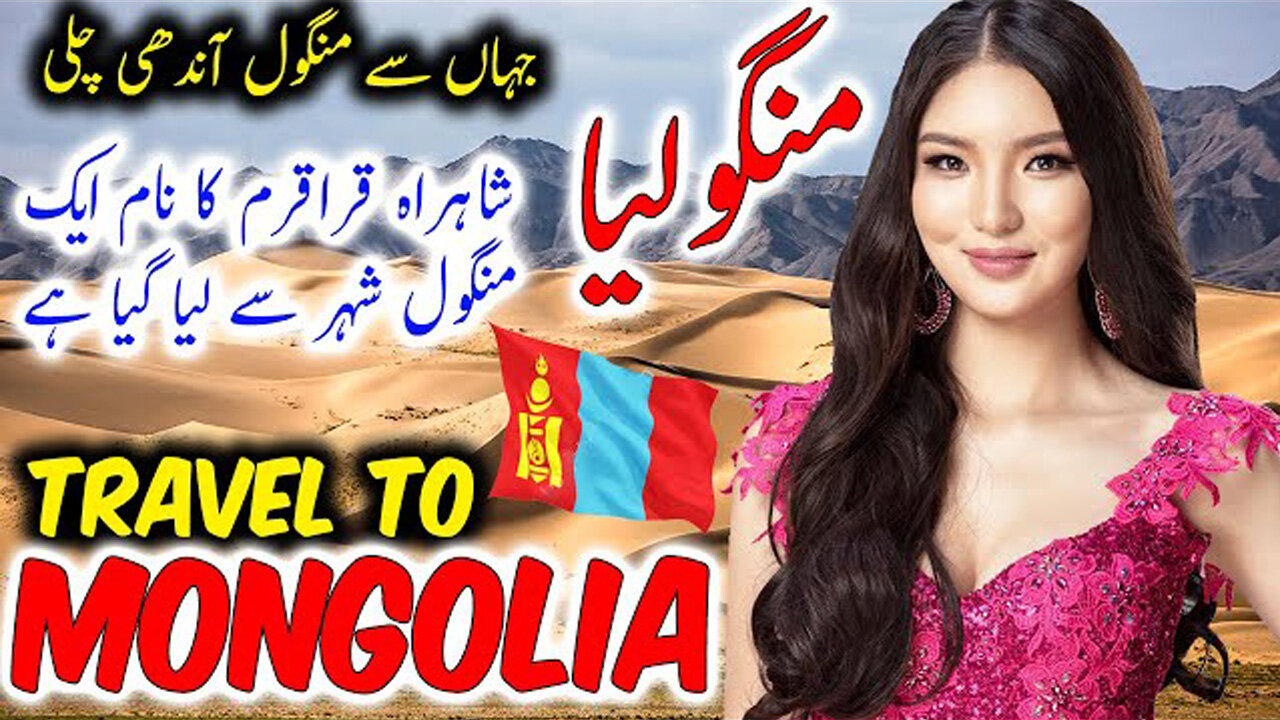Premium Only Content

Travel To Mongolia | Documentary Of Mongolia | History And Facts About Mongolia |منگولیا کی سیر
Ancient Nomadic Culture: Mongolia has a history deeply rooted in nomadic culture, where various tribes roamed the vast steppes for centuries.
Genghis Khan's Legacy: Genghis Khan, born as Temüjin, united the Mongol tribes in the 13th century and established the Great Mongol Empire, becoming one of the most influential figures in world history.
Eurasian Empire: The Great Mongol Empire became the largest contiguous land empire ever, stretching from Asia to Europe, allowing cultural exchange and trade along the Silk Road.
Yuan Dynasty Rule: After Genghis Khan's death, his descendants ruled the Yuan Dynasty in China under Kublai Khan's leadership, contributing to both Mongolian and Chinese history.
Ties with Tibet: Mongolia's historical ties with Tibet led to the adoption of Tibetan Buddhism as a dominant cultural and religious influence in the region.
Chinese and Soviet Control: Mongolia endured periods of Chinese suzerainty and later became a satellite state of the Soviet Union, achieving full independence in 1990.
Democratic Transition: Mongolia transitioned to a democratic system in the early 1990s, marking a significant change in its political landscape.
Mineral Resources: Mongolia's vast mineral resources, including coal, copper, and gold, have driven economic growth and attracted foreign investment in recent years.
Modern Challenges: Despite its rich history, Mongolia faces challenges related to modernization, urbanization, and preserving its unique cultural heritage.
International Relations: Mongolia maintains diplomatic ties with various countries and is known for its policy of "third neighbor" diplomacy to balance relationships with powerful neighbors like Russia and China.
here are five popular places in Mongolia that were often visited by tourists:
Ulaanbaatar: The capital city of Mongolia is a hub of cultural attractions, museums, and historical sites, such as the Gandan Monastery and the National Museum of Mongolia.
Gobi Desert: The Gobi Desert offers a unique and breathtaking landscape with towering sand dunes, flaming cliffs, and unique rock formations like the Bayanzag "Flaming Cliffs."
Lake Khövsgöl: Known as the "Dark Blue Pearl," this pristine lake surrounded by lush forests and mountains is a popular destination for outdoor enthusiasts, offering activities like trekking and boating.
Terelj National Park: Located near Ulaanbaatar, this national park features stunning rock formations, the famous Turtle Rock, and opportunities for hiking, horseback riding, and experiencing nomadic culture.
Orkhon Valley: A UNESCO World Heritage Site, this historic region is home to ancient archaeological sites, including the remains of Kharkhorin (the capital of the Great Mongol Empire) and the Tövkhön Monastery.
-
 LIVE
LIVE
Benny Johnson
35 minutes ago🚨 FBI Launches INVESTIGATION Into James Comey for Illegal Spying on Trump | WH Cabinet Meeting LIVE
5,056 watching -
 LIVE
LIVE
Steven Crowder
2 hours ago🔴 Trump Keeps Delivering | This Week’s 3 Big Wins Explained
32,287 watching -
 1:07:54
1:07:54
Timcast
1 hour agoTulsi FIRED 100+ Deep State PERVS After Fed Kink Chat EXPOSED, Trump CLEANS HOUSE | Timcast LIVE
22.8K15 -
 LIVE
LIVE
Bannons War Room
8 days agoWarRoom Live
21,229 watching -
 LIVE
LIVE
House Committee on Energy and Commerce
4 days agoO&I Hearing: Examining the Biden Administration’s Energy and Environment Spending Push
255 watching -
 LIVE
LIVE
LFA TV
15 hours agoFLUSHING THE TURDS! | LIVE FROM AMERICA 2.26.25 11AM
3,609 watching -
 2:10:18
2:10:18
Matt Kohrs
12 hours agoThe Crypto Crash, Stock Bounce & Breaking News || The MK Show
23.3K2 -
 LIVE
LIVE
Caleb Hammer
39 minutes agoFinancial Audit’s Dumbest Couple Ever
182 watching -
 LIVE
LIVE
MYLUNCHBREAK CHANNEL PAGE
23 hours agoA Little Season in the East?
334 watching -
 DVR
DVR
VSiNLive
1 hour agoA Numbers Game with Gill Alexander | Hour 1
3.67K